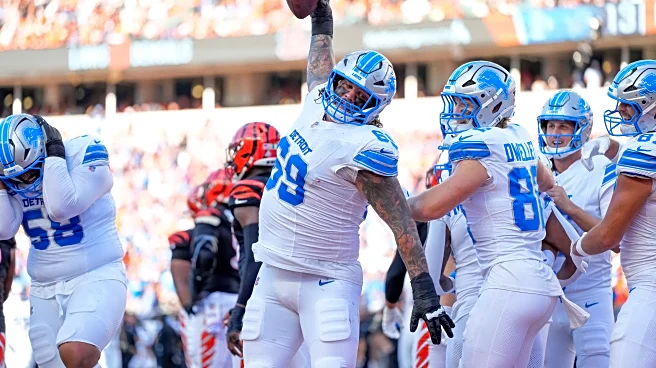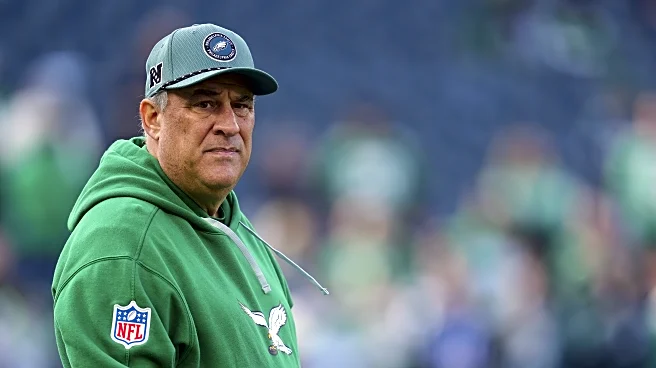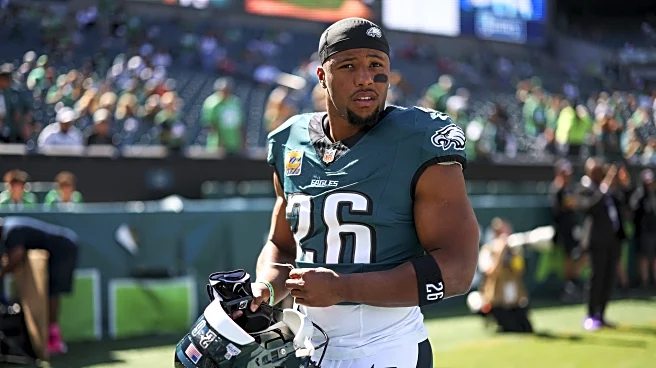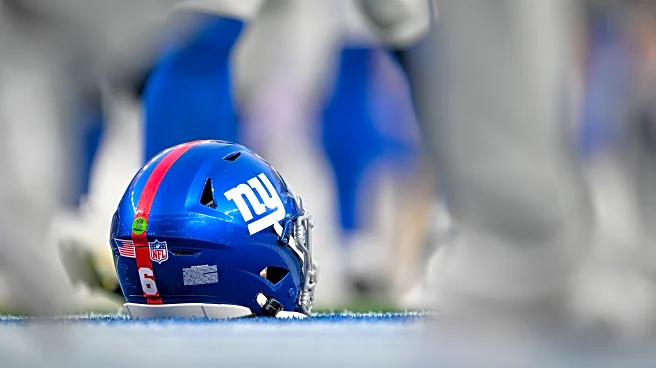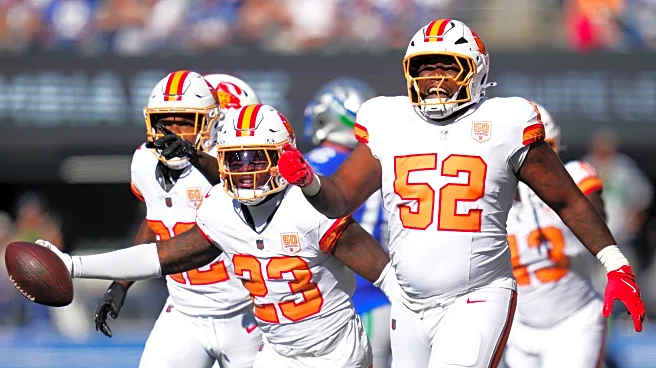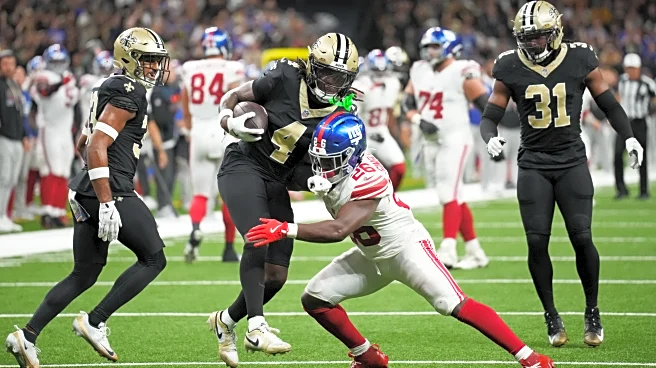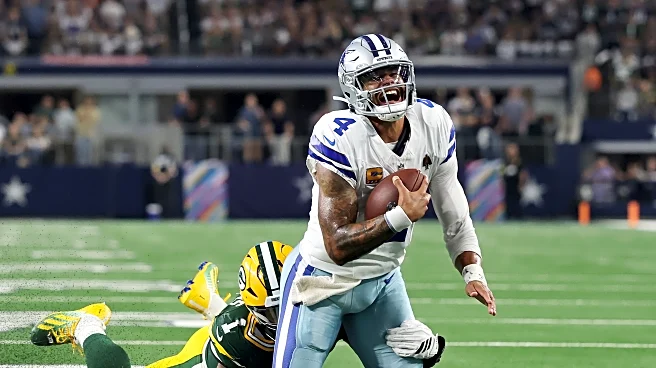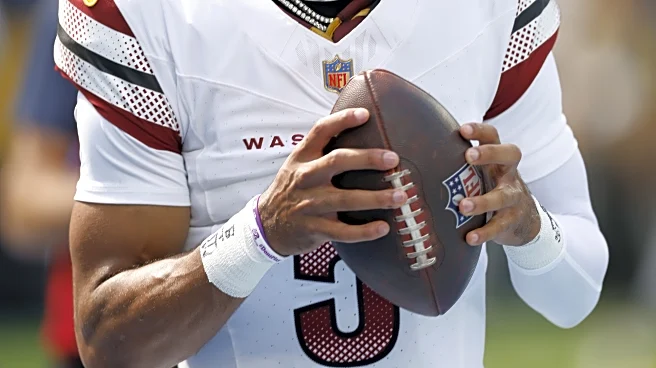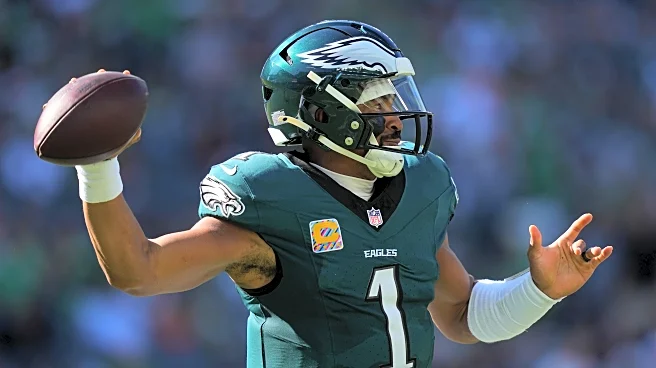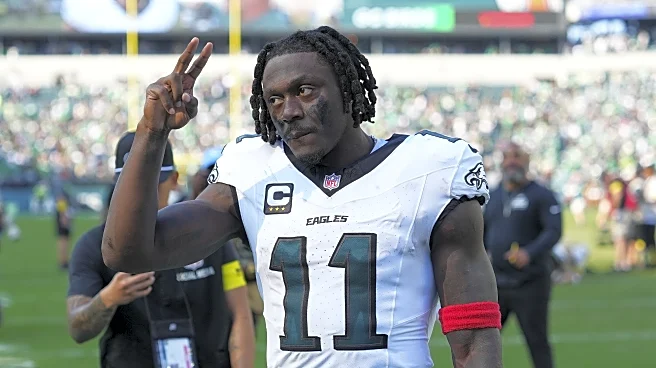The New York Giants Thursday night game against the Philadelphia Eagles marks the beginning of a brutal stretch in a brutal schedule for the Giants.
Over the next 17 days, the Giants will have games against
the 4-1 Eagles, 3-2 Denver Broncos, and then another game against the 4-1 Eagles. The Giants, meanwhile, are coming off of a painful collapse against the (formerly winless) New Orleans Saints which saw New York’s play go from dominant to disastrous in the span of a quarter.
That game also saw wide receiver Darius Slayton get knocked out with a hamstring injury, adding to the concerns created by Malik Nabers’ torn ACL. Slayton is not expected to play Thursday night.
That means that if the Giants want a prayer of upsetting the Eagles, their defense will have to lead the way.
The good news is that the Eagles’ offense has been a serious question mark this year. The offensive coaching staff is under fire in Philadelphia, their passing game has only been marginally more effective than the Giants’ and their offensive line has been worse.
So what can the Giants expect from an Eagles’ offense that’s looking for a “get right” game?
Stop the run
This has to be the focus for the Giants in this game. The Giants gave up 320 yards on the ground to the Eagles last year, 269 of which came in the first game against their starters. The Eagles’ passing offense has been a disappointment this year and their offensive line has been a low-key concern for the team.
The good news is that for all that went wrong for the Giants in their collapse against the New Orleans Saints, they defended the run well. The Giants only gave up 88 yards on 30 carries on the ground, a paltry 2.9 yards per carry for a team that had been 10th in carries and 6th in EPA.
The Eagles are, of course, a different beast than the Saints. They’ve taken over the sixth spot in rushing EPA, but at five points higher than the Saints’ previous mark, and are sixth in rushing touchdowns. The Eagles’ level of efficiency in the run game is amazing considering that they’re averaging less than 100 yards per game (99.8, 25th in the NFL), just 3.5 yards per carry (28th), while being tied with the Giants and Broncos for the sixth-most rushing attempts at 142.
The Eagles only ran the ball 11 times against the Denver Broncos, with Saquon Barkley leading the way with 30 yards on six carries (a long of 17). The Eagles held a 17-3 lead going into the 4th quarter. Logic — and team identity — would dictate that they’d lean on the run to close out the game in that situation. Instead, they only ran the ball once in the entire fourth quarter, and twice in the entire second half.
Barkley only getting six carries the entire game is of particular note considering he got a “DNP” in the Eagles’ estimated Monday practice report. Barkley is dealing with a knee injury, and while we should expect him to play it’s fair to wonder if he’d still be limited on Thursday night.
The Eagles have former Green Bay Packers running back (and Barkley’s fellow squat enthusiast) A.J. Dillon and Will Shipley as their running back depth — not to mention Jalen Hurts.
The Giants did a good job of holding their blocks and swarming to the football with good angles against the Saints. That has been a consistent problem through preseason and the first four weeks of the season. The Giants were generally acceptable (not great, but fine) when it came to stopping the run in the first four weeks, but poor angles meant that when they did miss a tackle, the results were often catastrophic explosive plays. They executed their run fits much more consistently against the Saints, and neither Alvin Kamara nor Kendre Miller found much room to run or yards after contact.
The Giants also tended to err toward using Dexter Lawrence on running downs, as opposed to passing downs. That could have been in response to the illness that kept him out of practice last week, or it could have been planned to address the Giants’ biggest defensive weakness with their best defensive player.
Assuming Barkley is healthy and as explosive as usual, he’s still at his most dangerous in space. His lone explosive run came on a toss play to the outside, where the Eagles were able to stretch the Broncos’ defense laterally. We should probably expect them to use similar tactics to attack the Giants’ depleted linebacking corps and frequent use of nickel packages.
Clipping their wings
(I do not, in any way, endorse or condone clipping the flight feathers of birds of prey.)
The Eagles’ passing game has not been what they envisioned through the first five games of the year. Wide receiver A.J. Brown has (seemingly, cryptically) expressed frustration with his lack of targets, and tight end Dallas Goedert has four touchdowns but has only been lightly targeted outside of the red zone. There’s obviously been a “settling in” period after Kevin Patullo was promoted from Passing Game Coordinator to Offensive Coordinator with the departure of Kellen Moore.
Jalen Hurts has primarily been a short-range passer, with most of his attempts coming 10 yards or less against the Broncos.

The Eagles have wanted to push the ball downfield this year, but they haven’t been able to do so consistently. Jalen Hurts is currently seventh in differential between intended and converted air yards, meaning that while he targets receivers downfield, the overwhelming bulk of his completions come close to the line of scrimmage — as you can see in the graphic above.
The Eagles did manage to get Brown and DeVonta Smith more engaged in the offense against the Broncos. However, Denver did a good job of keeping those gains manageable and not letting the Eagles’ receivers get behind them. Philly’s passing offense appears to tend towards condensed formations which blossom into crossing routes, designed to create traffic. Those crossing routes can come in a variety of flavors, from standard mesh concepts to deeper scissors concepts between receivers, to tight ends and running backs crossing in the hook/curl area of the field.
Their receivers are skilled route runners who typically execute those route concepts well. Combined with the fact that players like Brown, Smith, and Barkley are all good (or great) athletes, the schemed separation makes even short routes dangerous.
The Broncos used a combination of post-snap coverage rotations and 7-defender coverages to keep the play in front of them while swarming to the ball. They typically played out of quarters coverages, though they mixed in enough Cover 4, Cover 2 (or 2-man), and Cover 3 to avoid being too predictable.
That could be a bit difficult for the Giants to replicate, as they’ve settled into a defense that is primarily based in Cover 1 and Cover 3 concepts. That caters to their man coverage corners, as well as the fact that both Tyler Nubin and Dane Belton are better in the short to intermediate area of the field. The Giants will likely want to keep eight defenders around the line of scrimmage to avoid giving the Eagles easy “run” looks. However, Cover 1 lends itself to one-on-one matchups that Hurts could exploit with Brown and Smith. Cover 3, meanwhile, has vulnerable seams that can be targeted by tight ends Goedert and Grant Calcaterra.
The area where the Giants have the advantage over the Broncos is in the versatility of their defensive front.
Each of Brian Burns, Kayvon Thibodeaux, and Abdul Carter is capable of effectively showing pressure before dropping into coverage. They’re fearsome enough pass rushers that showing pressure has to be respected by the offensive line, but also athletic enough that they can effectively muddy the middle of the field. That can allow the Giants to effectively morph their defense after the snap, which the Eagles struggled some with against the Broncos.
Grounding Jalen Hurts
In an increasingly frustrating theme this year, the Giants can’t simply turn their pass rushers loose. Hurts isn’t nearly as twitchy as Jayden Daniels, nor as slippery as Patrick Mahomes, but he’s still more than capable of forcing undisciplined defenses to pay.
The good news is that the Giants did an excellent job of dealing with a similar threat in Justin Herbert. The Giants can’t bite on misdirection, over-running the play and creating scrambling avenues for Hurts. Likewise, they need to control the depth of their rushes, keeping Hurts in front of them or at least not rushing past him. Rushes that get deeper than the quarterback create opportunities for offensive tackles to usher them around the pocket and open wide holes in the B-gap. That either gives the quarterback space to step up and buy time to attack down the field or pull the ball down and run.
As Giants fans well know, Hurts’ athleticism means that undisciplined rushes absolutely will be punished. The Eagles’ offense has not been what it was a year ago, but they still have more than enough weapons to hurt any defense given enough time.
The good news here is that the Eagles’ pass protection has not been stellar this year. They currently rank 25th (as of Monday morning) in ESPN’s Pass Block Win Rate, a full eight spots below the Giants’ 17th-ranked pass protection.
The Denver Broncos succeeded in frustrating the Eagles’ passing attack less because of the pressure applied to Hurts, even though they did sack him six times. Four of those six sacks were more “coverage” sacks than anything else — twice he was run out of bounds while scrambling, and twice the he was run down from behind late after escaping the pocket.
The Bronco’s pass rush was, overall, successful because of how they constricted the pocket. Hurts has matured into a good downfield passer, however he still becomes inaccurate when the pocket is muddied and there are bodies close to him. Only one of Denver’s sacks came from a rusher beating his man cleanly (a sack for an 11-yard loss by Nic Bonnito), and even then, it was successful because he won inside and the rest of the rushers left Hurts nowhere to go. The final sack of the game saw Denver constrict the Eagles’ offensive line until the pocket finally burst and Hurts was buried under the bodies.
Giants fans likely don’t want to see disciplined, methodical rushes. They’d much rather see something like the Giants’ 10-sack affair against the Chicago Bears in 2010. However, turning the safety of the pocket into a compactor is likely the way to go this game. That obviously puts the onus on the secondary to hold up (without committing penalties), but that’s the nature of defending a player like Hurts.

